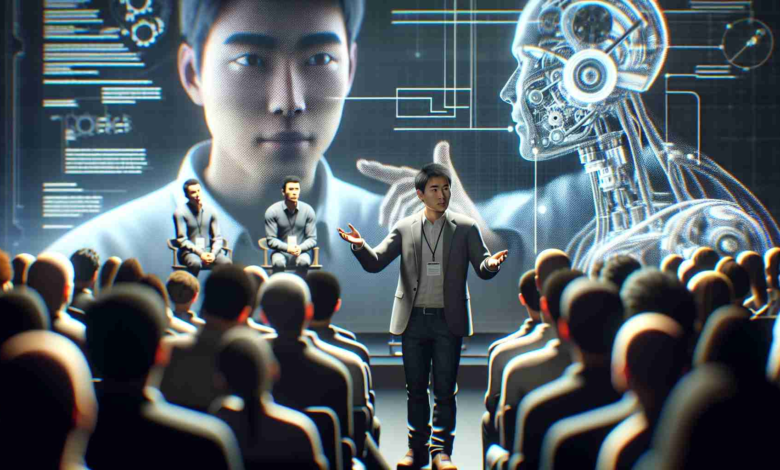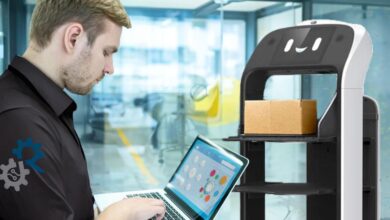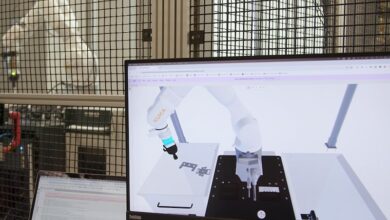Insights from a World-Renowned Roboticist

Exploring Human-Like Robots for a Better Future
During the ‘Innovate Korea 2024’ event hosted by Herald Media Group, Jun-Ho Oh, the founder of Rainbow Robotics and an esteemed roboticist, offered engaging insights into the current status and future of humanoid robots. He articulated that mimicry of human anatomy in robotics emerges naturally as experiments progress within human environments.
Oh, who also holds the position of Chief Technology Officer at Rainbow Robotics and is a distinguished Professor at KAIST, was instrumental in creating Korea’s first humanoid robot, ‘HUBO’. Under his guidance, Rainbow Robotics has achieved international accolades, including victory in a robotic competition organized by the US Department of Defense’s Advanced Research Projects Agency.
During his presentation, Jun-Ho Oh was accompanied onstage by a quadruped robotic ‘dog’ developed by Rainbow Robotics, impressively ascending a set of stairs. Speaking on the topic, he reflected on the natural progression towards humanoid forms in robots since they operate within human spaces—making human-like abilities a necessity for tasks such as driving cars or opening doors.
Furthermore, he highlighted the significant potential of humanoid robots as testing platforms for new technologies due to their need for high-quality components. In terms of imbuing AI into humanoid robots, he noted the critical need for a balance between autonomy and safety. The faster and stronger a robot is, the more dangerous it could be if it acts unpredictably, emphasizing that physical power in robots should be balanced with human oversight.
In his final thoughts, Oh addressed a roboticist’s dilemma—deciding the extent of responsibility to be programmed into AI-controlled robots. He also demonstrated the use of AI in robotic training, pointing out that modern robots learn visually and through touch, superseding traditional training methods. Multi-modal techniques that synthesize diverse data types like natural language and visual cues are also being actively utilized.
The lecture was both entertaining and illustrative, with HUBO delighting the audience by dancing to Psy’s ‘Gangnam Style’ and operators teaching robotics through synchronized manipulations. These demonstrations underscored the complexity and sophistication achievable in current robotic technologies.
Potential Future Improvements in Humanoid Robotics
One might consider additional facts not mentioned in the article to enrich understanding in the area of humanoid robotics. For instance, researchers are constantly working to improve the emotional intelligence of humanoid robots so that they can better understand and interact with humans on an emotional level. Moreover, advancements in materials science are leading to the development of artificial ‘skins’ and ‘muscles’ that could give robots more human-like touch and movement capabilities.
Key challenges in humanoid robotics include achieving advanced levels of artificial intelligence, ensuring the safety and security of these systems, and addressing the ethical implications of their applications. The controversy often revolves around the potential for job displacement due to robotic automation, the moral status of humanoid robots, and concerns over privacy and surveillance.
There are several advantages and disadvantages associated with humanoid robotics:
Advantages:
– The potential to perform tasks that are dangerous, dull or dirty for humans (e.g., disaster response, repetitive manufacturing jobs).
– Assistance with social tasks such as elderly care or education, where human-like interaction is beneficial.
– They advance our understanding of human anatomy and behavior, contributing to fields such as biomechanics and psychology.
Disrelationsvantages:
– High cost of development and maintenance.
– As noted in the article, the potential risks associated with strong and fast robots if they act unpredictably.
– Ethical concerns, including the possibility of reducing human contact and the need to address issues of consent and privacy in interactions with humanoid robots.
For further information on this topic beyond what the article provides, it is recommended to visit credible domains such as the website for the Institute of Electrical and Electronics Engineers (IEEE) Robotics and Automation Society at IEEE RAS or the International Federation of Robotics at IFR. These websites provide a wealth of resources and updates in the field of robotics.



